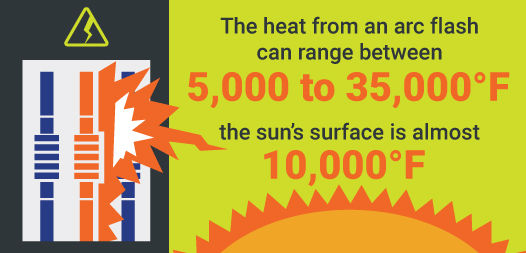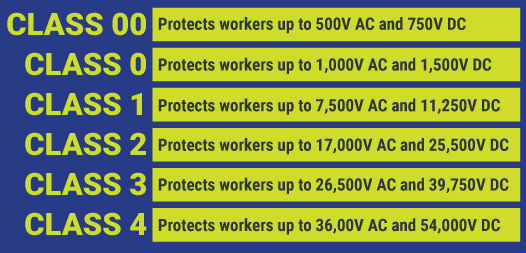November 2023
Selecting Gloves for Electrical Safety: Handy Information

In a past study, OSHA found that over 70 percent of workers don’t wear gloves, and the vast majority who do wear them don’t have the right kind of glove protection. Electrical workers need particular gloves to protect their hands from exposure to shock, flash fires, and arc flashes.

The heat from an arc flash can range between 5,000 to 35,000 °F — the sun’s surface is almost 10,000 °F! Burns from arc flashes, flash fires, or electrical shock can leave workers with disfigurement, amputation, and the loss of use of one or both hands. Workers’ hands are the most vulnerable body parts since they’re the closest to the work!

What you need
Workers exposed to electrical hazards should use three types of hand protection — rubber gloves, liner gloves, and leather gloves.
Rubber-insulated gloves protect from electrical shock. They insulate workers’ hands from electrical hazards. The gloves are rated for a maximum voltage level they can protect you from. Liner gloves are worn under the rubber gloves and help to prevent abrasions or chaffing to your skin as it contacts it. In the cooler months, liner gloves also help to keep your hands warm!
Properly rated leather gloves are worn over rubber gloves to help prevent punctures, cuts, and abrasions to the rubber lining that create a source of exposure to electrical hazards. Leather gloves aren’t rated for protection from electrical shock.
Why you need it
Rubber insulating gloves and other types of electrical protection are required per OSHA 1910.137, Electrical Protective Equipment, and are based on the American Society for Testing and Material (ASTM) standard ASTM D120, Standard Specification for Rubber Insulating Gloves.
OSHA and ASTM set safety criteria such as design requirements, protection ratings, and inspection intervals that employers and workers must follow. Rubber insulating gloves are available in six OSHA/ASTM-defined voltage classes of 00 through 4.

Testing
All gloves should be inspected before using them for damage. OSHA and ASTM require that rubber-insulated gloves are tested upon initial use and then every six months afterward or after every use without protective leather gloves.
Insulating gloves must be given an air test along with the inspection. This test can be done by simply rolling the cuff toward the palm so that air is entrapped within the glove or using a mechanical inflater. This ensures there are no holes or damage to the glove.

Sizing
ASTM requires a minimum cuff gap. How much depends on the class of rubber gloves. This means that your rubber gloves must be exposed beyond your leather gloves. Classes 00 and 0 require a minimum of a ½” gap between the leather protector’s cuff and the rubber glove’s cuff. Class 1 requires a 1-inch gap, 2 inches for Class 2, and three inches for Class 3.
Having the proper size glove reduces the risk of you becoming the path to ground. To determine your approximate glove size, measure the width of your palm. For example, if the width is 7.5 inches, a size 8 glove would fit well.
You should perform a workplace assessment to determine if your employees’ hands have exposure to electrical hazards. If they do, provide them with adequately rated gloves to protect them from injury from shock, flash fires, and arc flashes.
GET A FREE ARC FLASH COMPLIANCE BRIEF
Learn more about arc flashes and arc blasts and how flame-resistant (FR) clothing can help protect your workers, while gaining insight into applicable OSHA requirements with our FREE Compliance Brief.

